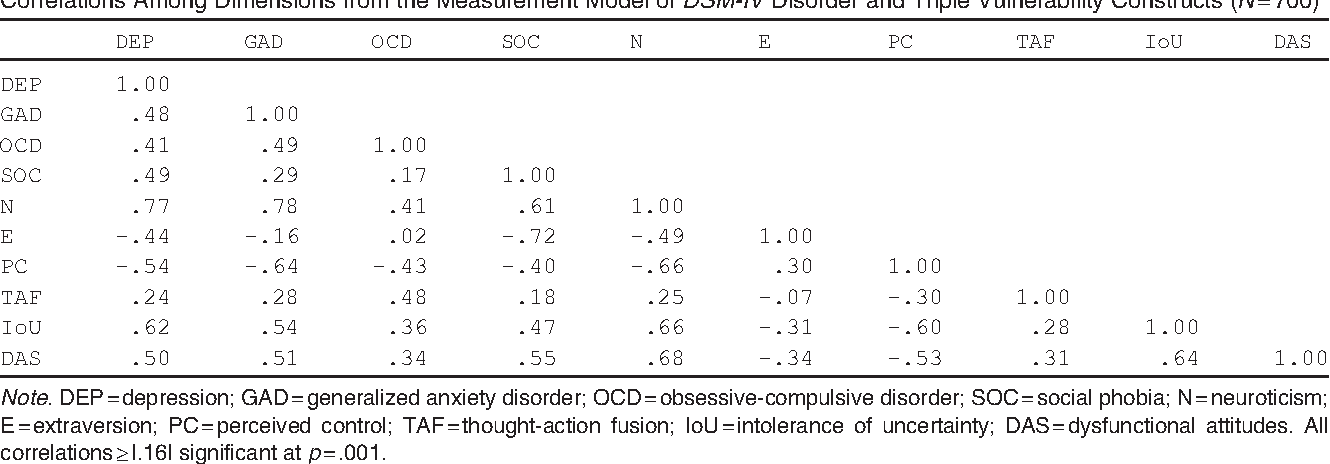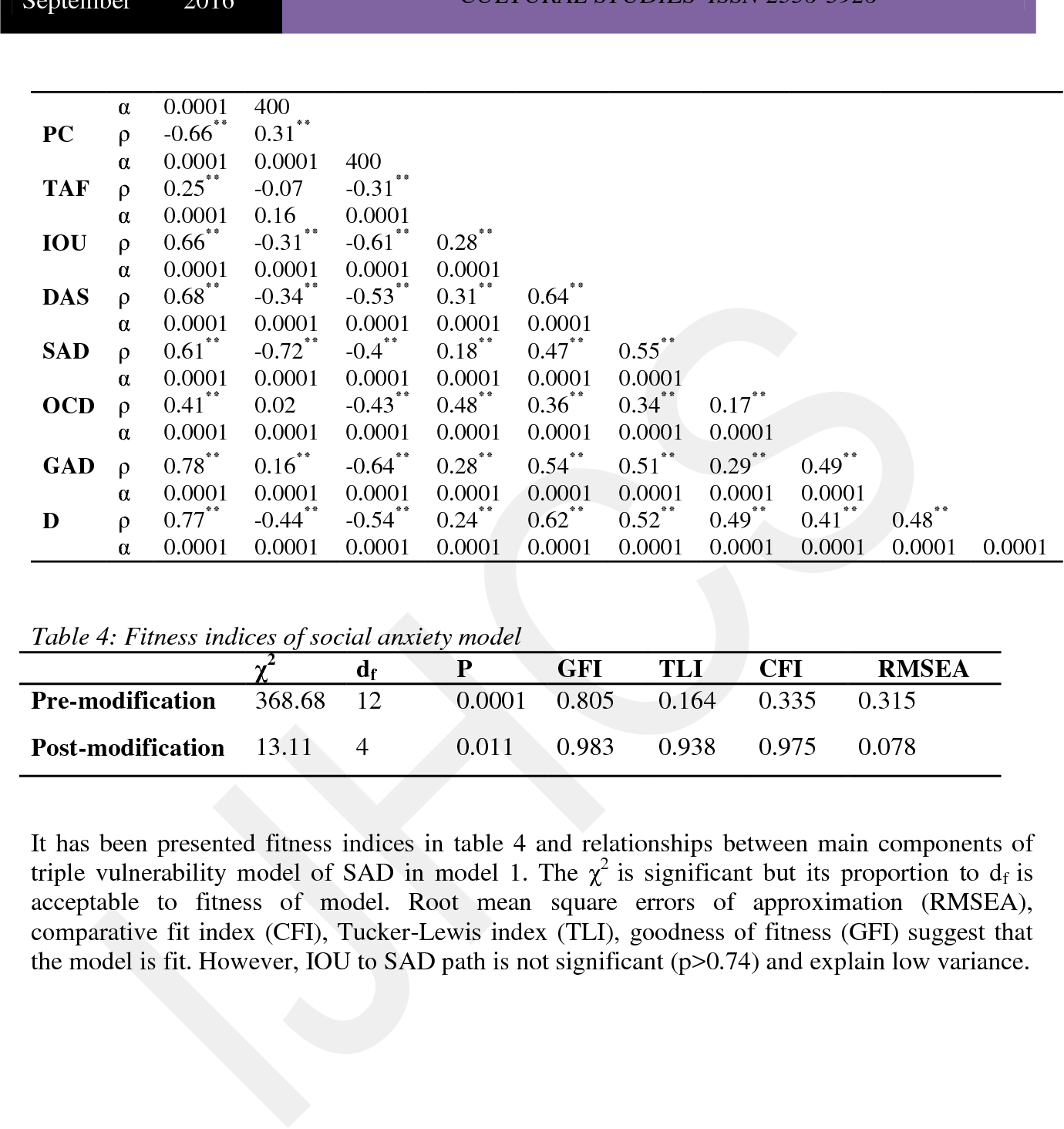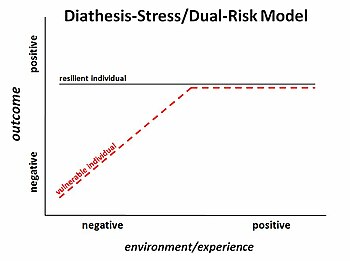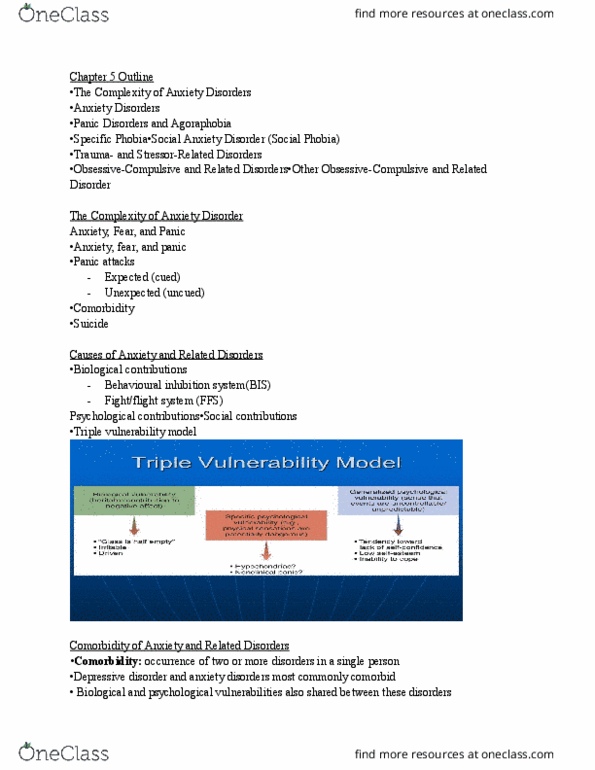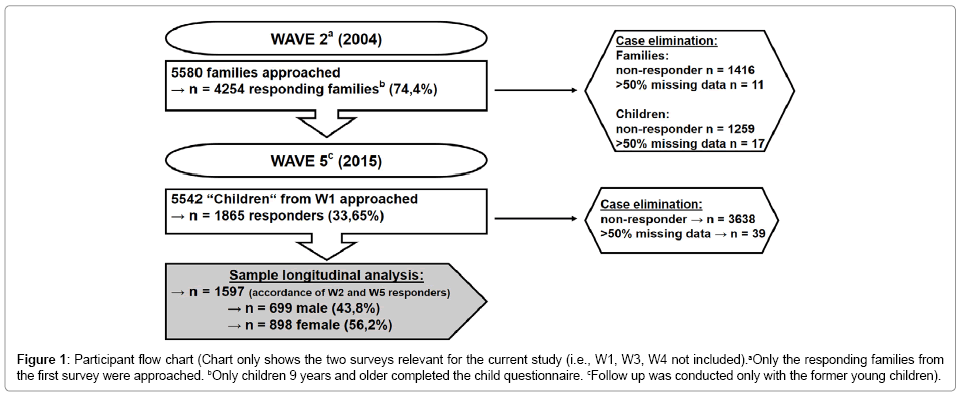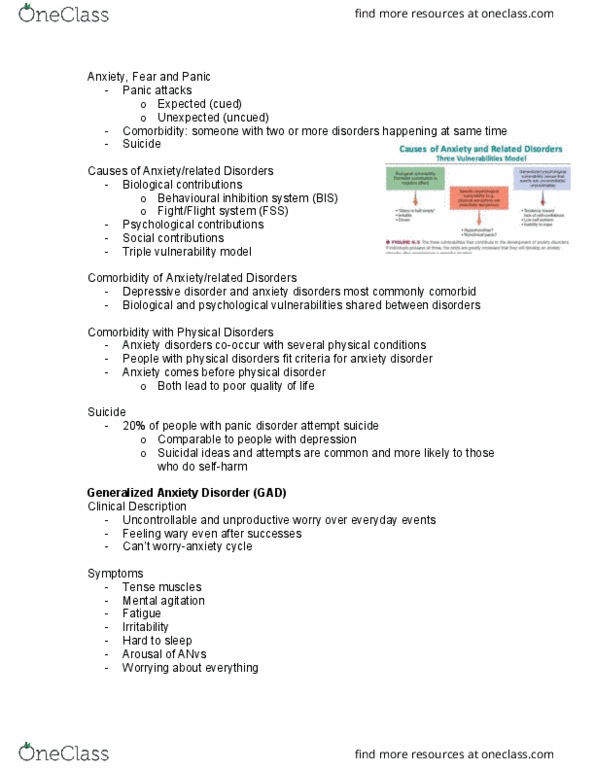Triple Vulnerability Model

A model of an integrated set of vulnerabilities is summarized including a generalized biological heritable vulnerability a generalized psychological vulnerability based on early experiences that contributes to the development of a sense of control over salient events.
Triple vulnerability model. According to the triple vulnerability theory three separate kinds of vulnerabilities are usually in place before an anxiety disorder will occur. First a generalized biological vulnerability must be present perhaps in the form of a genetically inherited tendency to respond anxiously. Certain fears are more easily conditioned and more resistant to extinction bc there is an evolutionary reason. Social phobia traumatic conditioning.
Barlows triple vulnerability theory of anxiety disorders is one such integrated model. This model can help in understanding the causes of psychiatric disorders how psychiatric disorders and addiction can influence each other and how co occurring disorders can be managed and treated together. The triple vulnerability model asserts that a sense of unpredictability and uncontrollability over life events and emotional states is a psychological vulnerability to all anxiety and mood disorders. A model of an integrated set of vulnerabilities is summarized including a generalized biological heritable vulnerability a generalized psychological vulnerability based on early experiences that contributes to the development of a sense of control over salient events and a more specific psychological vulnerability associated with learning experiences that serve to focus anxiety on specific objects or situations.
Diathesis stress model genetically based vulnerability for phobias personality factors affect speed and strength of conditioning differences in life experiences. Barlows model which explains the origins of anxiety disorders contains three components. Bipolar disorders cover a spectrum of symptoms but generally include major. Understanding anxiety disorders from a triple vulnerability framework.
Indeed perceived control has long been a central construct in etiological models of depression and anxiety dating back to rotters 1954 locus of control theory and seligmans 1975 learned helplessness theory. Integrated theories or models. The stress vulnerability model provides answers to these questions. One conceptual framework for understanding the pathogenesis of emotional disorders is to identify risk factors or vulnerabilities that contribute to the etiology of psychopathology.
Indeed perceived control has long been a central construct in etiological models of depression and anxiety dating back to rotters 1954 locus of control theory and seligmans 1975 learned helplessness theory. The most severe depressive disorder is major depressive disorder major depression. The triple vulnerability model asserts that a sense of unpredictability and uncontrollability over life events and emotional states is a psychological vulnerability to all anxiety and mood disorders.








